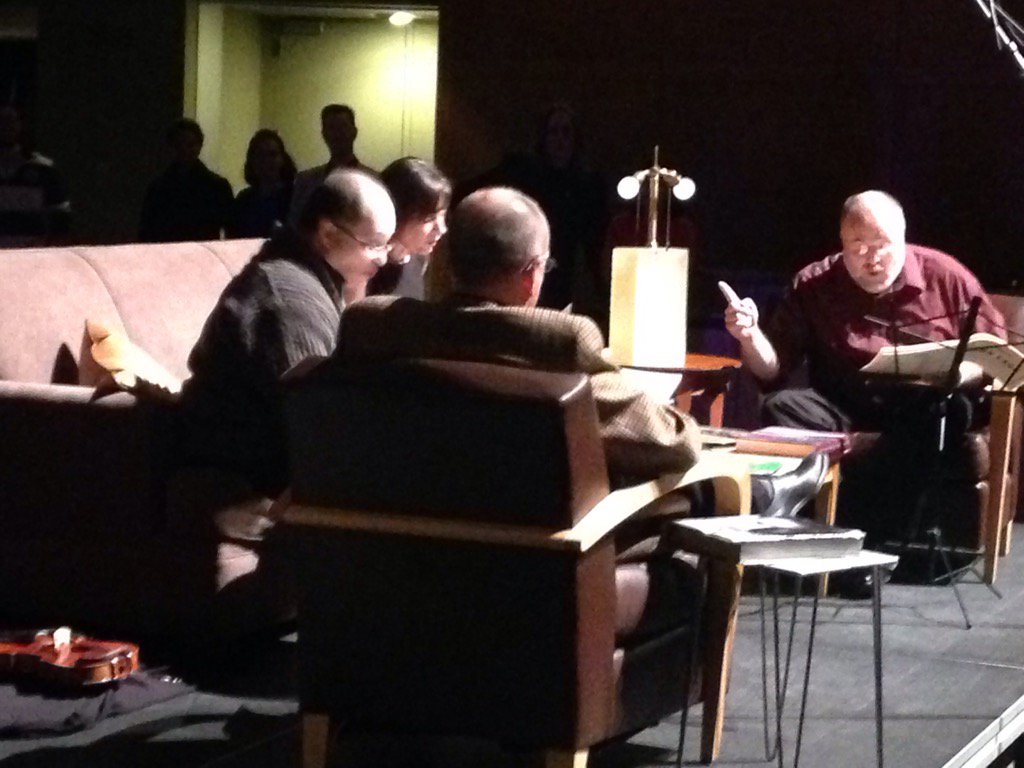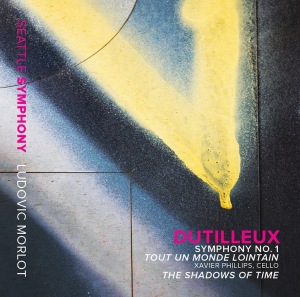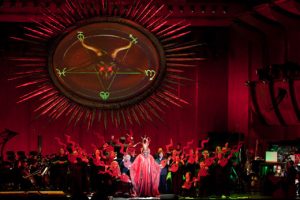
Estonian conductor Olari Elts
I realize it’s hard to believe, but this weekend in Seattle actually includes some worthwhile activities not related to (or even conflicting with) monitoring the Super Bowl. To wit: the latest music-making by the Seattle Symphony, either in the condensed “untuxed” version this evening or on Saturday 1 February in the complete program designed by guest conductor Olari Elts.
And a damn fine program this is, featuring a combo that might at first seem a bit unusual but that actually makes a lot of sense: Dmitri Shostakovich and John Adams. I’ve grown tired of the hyperbole that compares the pressure to conform to serialism in the West during the postwar decades to the Soviet Union’s cultural watchdogs — it’s insulting, to say the least, to equate whatever American composers who chose not to adhere to the predominant fashion had to face with the year-to-year dread about their very survival that was the experience of Shostakovich and his peers.
Still, there are some valid parallels: composers on other side of the Iron Curtain had to deal with implicit or explicit guidelines as to what was considered the “proper” music to be writing — guidelines that were diametrically directed, as it happened, toward populism in the East and “elitism” in the West. Both Shostakovich and John Adams in his early breakthrough years discovered ways to navigate the fault lines between these putatively incompatible realms, exploring new imaginative possibilities that could balance complexity with accessibility, experimental vigor with a recognizable and rooted vernacular.
Olari Elts, a native of Tallinn, Estonia, as well as this week’s guest soloist, the Moscow-educated Alexander Melnikov, were both teenagers during the waning years of the Soviet Union. So, while still relatively young, they bring a perspective that hasn’t yet forgotten how a composer like Shostakovich could manipulate expectations to write music whose meanings are more ambivalent than what seems on the surface to be the case.

Russian pianist Alexander Melnikov
And bravo to both for selecting the lesser-known Second Piano Concerto, a later work Shostakovich wrote for his son Maxim to premiere at his graduation from the Moscow Conservatory. Melnikov, in what I believe marks his Seattle debut, revealed why he’s regarded as a leading Shostakovich specialist — his recording of the complete Preludes and Fugues has been heaped with awards — and used his impressive technical precision to make eminent musical sense.
The Second Piano Concerto is a most unusual Shostakovich score — almost neoclassical in sensibility, but without the sense of parody that often goes along with that (especially in Prokofiev), and certainly lacking the ironic air you’d expect from Shostakovich himself. At the same time, it’s not entirely innocent or naive. That hard-to-define zone in between is what emerged from Melnikov’s performance.
He managed to articulate the straitjacketed, percussive metrics of the first movement’s big solo as a joyful romp, discovering a sense of freedom amid its strictly regimented confines. Especially memorable was his dialogue with the SSO strings in the Andante, paced here like a Chopin nocturne. Wistful without giving in to sentimentality, this builds into some of the tenderest moments to be found in Shostakovich — as if he were conjuring in music a hoped-for but knowingly unrealistic future for his son.
Returning after his SSO debut two years ago, Elts maintains a serious podium demeanor but conjures a sensuous and scintillating palette from the players, as his take on Adams’s The Chairman Dances at the top of the program revealed. (Was Daniel Licht listening closely to the woozy middle section when he wrote the theme music for Dexter?) A bit foursquare in his overall approach to the score’s intricate cross-rhythms, Elts was more spontaneous with the beguiling sound picture of this Nixon in China-vintage music.
He similarly showcased Adams’s masterful orchestral thinking in The Black Gondola a late-period, experimental piano score by Franz Liszt which Adams orchestrated in 1989: so many shades of dark, drawing the listener into a black hole of melancholy.
With The Black Gondola as its prelude, Elts apparently also wanted to signal that there’s a good deal more to the Symphony No. 9 by Shostakovich than its allegedly “cheerful” character. He then led a riveting account eager to plunge into the enigmas posed by this compact score, not smooth them over — or explain them away as defensive irony.
A kind of “revocation” of Beethoven’s affirmative Ninth (if not in the spirit of Thomas Mann’s protagonist composer in Doktor Faustus), Shostakovich’s No. 9 caps his epic “wartime symphonies” with a tightly condensed, often lightly textured work that makes for a fascinating contrast with the completely different “lightness” of the Second Piano Concerto.
The performance features some first-rate solo playing by bassoonist Seth Krimsky and flutist Christie Reside as well as Ko-ichiro Yamamoto on trombone and David Gordon on trumpet. Elts brings out the inner logic that connects Shostakovich’s elliptical thinking, above all in the almost cinematic dissolves of the last three movements. It’s rare to find yourself so pleased by being teased and puzzled.
(c) 2014 Thomas May. All rights reserved.
Filed under: concert programming, review, Seattle Symphony






